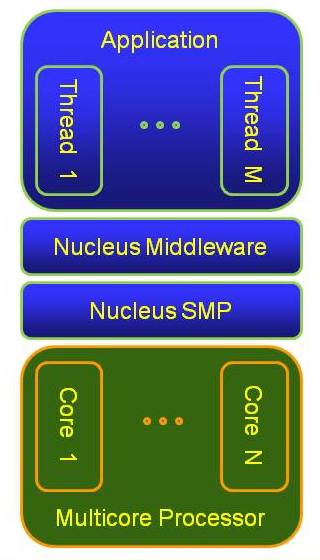AMP vs SMP
It is becoming common for embedded designs to incorporate more than one CPU – maybe multiple cores on a chip or multiple chips on a board or any combination of these. Indeed, it has been suggested that it will soon be the norm to build systems that way.
The use of multiple cores has spawned various technologies and, of course, much terminology and jargon. When new technical terms and acronyms appear, there is inevitable misuse and misunderstanding. This seems to be the case with AMP and SMP, so maybe I can set the record straight …
AMP stands for Asymmetric Multi-Processing; SMP means Symmetric Multi-Processing. These terms are not at all transparent. In seeking a means to clarify, I thought I would check Wikipedia and looked up “AMP”. From the disambiguation page, I found the relevant article. Well, I say “relevant”, but it really does not cover the topic as we see it today. It talks about historical uses of multiple CPUs and dismisses it to history. So, I will try to advance definitions:
An AMP system:
• multiple CPUs
• each of which may be a different architecture [but can be the same]
• each has its own address space
• each may or may not run an OS [and the OSes need not be the same]
• some kind of communication facility between the CPUs is provided
An SMP system:
• multiple CPUs
• each of which has the same architecture
• CPUs share memory space [or, at least, some of it]
• normally an OS is used and this is a single instance that runs on all the CPUs, dividing work between them
• some kind of communication facility between the CPUs is provided [and this is normally shared memory]
Typically, SMP is used when an embedded application simply needs more CPU power to mange its workload, in much the way that multi-core CPUs are used in desktop computers.
AMP is most likely to be used when different CPU architectures are optimal for specific activities – like a DSP and an MCU. In an AMP system, there is the opportunity to deploy a different OS on each core – e.g. Nucleus and Android/Linux – as befits the required functionality.
This topic will be address in a webinar, which we are presenting shortly in collaboration with the Multicore Association. After the event, a recording of the session will be available online.
Collin,
I am reading you articles about heterogeneous and homogeneous architectures in different blogs. I would like to ask some principal questions:
1. Can we simply define heterogeneous design as a Multiprocessor Chip. Basically in order not to have two chips with separate processors, they are both integrated on the same piece of silicon and they share some resources?
2. How can a AMP be run on homogeneous architecture as you stated in https://blogs.mentor.com/colinwalls/blog/2014/07/21/multicore-systems-heterogenous-architectures-untangling-the-technology-and-terminology/
Could you please provide an example.
@Nemanja
1. A heterogeneous design simply contains multiple CPU cores which are a mixture of architectures. They may be all on one chip, but, if they are more widely distributed, that makes little difference from a software perspective
2) You can configure any multicore system as AMP simply by running a separate OS instance [or none at all] on each core. It does not matter whether the cores have the same architecture or not. An SMP system can only be build with a homogeneous architecture.